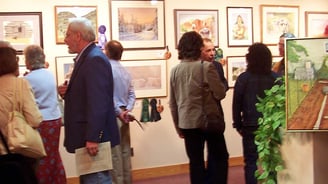
UTICA ART ASSOCIATION
DEDICATED TO SERVING THE CENTRAL NEW YORK ARTS COMMUNITY
The Utica Art Association in a nonprofit organization serving the Central New York arts community. We provide information and support to regional artists and the creative community. Member artists work in a wide variety of mediums.

ARTIST SUPPORT
ARTS INFORMATION
ARTISTIC GROWTH






2025 MEETING SCHEDULE
10:30am in the New Hartford Library Corrisanti meeting room
2 Library Ln (at Oxford Road), New Hartford.
The UAA welcomes all who are interested in art & photography, learning about art, and creating and displaying their art to join our Association. Visitors are welcome to attend our meetings.
April 26
May 17
June - TBA
Sept 20
Oct 18
Nov 15
Dec TBA
Herkimer College UAA Members Show
Herkimer College UAA Members Show
Utica Art Association Presents the
Utica Art Association Members Exhibition
March 7 - April 15, 2025
at the Cogar Gallery, Herkimer College, Robert McLaughlin College Center 100 Reservoir Rd., Herkimer, NY
No work may be removed before pickup time Tuesday, April 15, 2025, 4 – 5pm. THE GALLERY HAS NO STORAGE SPACE. A late fee of $10 may be charged if you fail to pick up your work or did not arrange to have someone else pick it up for you. Work may be picked up by an agent. Receipts required.
AWARDS
A judge will choose five Artistic Merit awards of $25 each; and one work for a $30 Best of Show Award.
